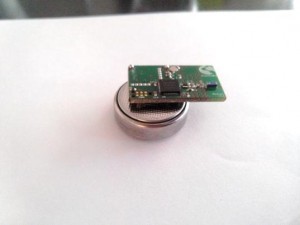These devices are resilient, reliable and so tiny that they can fit in anywhere. With a wide range of usage, they can be installed as a tracking device for objects or people. This technology is already bringing in about a paradigm shift in the way brands communicate with consumers in the retail sector integrating IoT and Business. Beacon provides a digital extension into the physical world and thus BLE’s and beacons could be the next era of presence based electronics and undoubtedly IoT.

The feature, which has been tested in the iOS app since last summer, is heading to Chrome 49 for Android soon. It enables users to opt in to interact with and receive content from nearby Bluetooth-enabled beacons in public places like shops, sports stadiums, schools, etc.
These devices can be installed on walkways or malls and practically anywhere. Using a smart phone which has voice assist navigation; visually impaired persons can move around anywhere without hassles. Traffic details, violations etc can flow seamlessly in areas with limited or no internet. Presence sensing safety devices hence can gain a lot of market in coming days. Other potential applications include mobile payments and retail shopper analytics at airports, concert venues, theme parks, and more.
Support is initially coming to the beta version of Chrome for Android, so it’ll just hit a selection of the app’s total user base at first, but it will roll out to the stable version over time.

Physical beacons offer a different marketing approach for companies that’s only just being realized today. Google’s blog post highlights a number of examples already, including how a school uses beacons to distribute class notes, how beacons were deployed at CES to replace marketing brochures, and how the Golden State Warriors pass highlight videos to fans over the air. That’s really just the surface being scratched right now, and enabling beacon interaction in Chrome for both iOS and Android is a major step toward opening future opportunities.
Beacons are likely to be a hot topic in 2016, and there are a number of tech companies pioneering the concept with hardware and software. Estimote, the company rumored to be working with retail giant Target, recently closed a $10.7 million Series A round, while there’s SoftBank-backed Swirl Networks, which raised an $18 million Series C last year, and Gimbal, a beacon company that was spun out of tech giant Qualcomm in 2014, in the mix, too.
Google and IoT
Citing difficulties around interoperability, user privacy, and managing interaction, Google said it is inviting university researchers to participate in the pilot via four to eight week experiments. Would-be takers have until the end of February to submit their proposals for inspection. Reach for more information at: https://googleresearch.blogspot.in/2016/02/announcing-google-internet-of-things.html
Courtsey: https://techcrunch.com/2016/02/11/google-chrome-for-android-will-soon-support-interactions-with-bluetooth-beacons/






